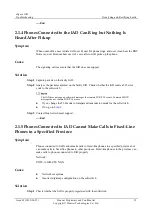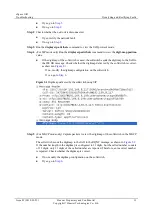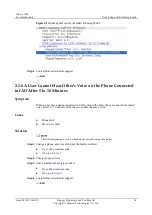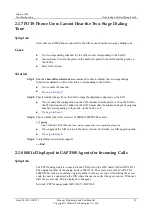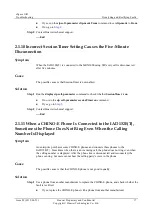
eSpace IAD
Troubleshooting
1 Overvie w
Issue 02 (2012-02-29)
Huawei Proprietary and Confidential
Copyright © Huawei Technologies Co., Ltd.
5
Scenario Information
This topic describes the fault scenario information that must be collected when a fault occurs.
Collect the following scenario information when a fault occurs:
Fault occurrence time and place
Fault symptom
Operations that were performed before the fault occurred
Measures that have been taken after the fault occurred and the results
Services that were affected by the fault and the scope of the fault
Networking Information
Networking information helps maintenance personnel to simulate the fault scenario and locate
the fault. The maintenance personnel must document and save the following onsite
information:
Physical network, including physical connections and connection media.
Device names and versions.
Logical connections between devices.
Device interconnection information, such as the VLAN, IP address, subnet, gateway, or
port of a device.
System Information
When a fault occurs, you can log in to the IAD web management system to obtain system
information described in
. The procedure is as follows:
1.
Log in to the web management system. For details, see the
eSpace IAD Product
Documentation
.
2.
Choose
Diagnose
>
System Information
from the navigation tree on the left. The
system information page is display ed.
3.
Click
Download
to download the system information.
Alternatively, you can view system information directly on the page.
Table 1-2
System information
Item
Description
Version
Information about software versions of the main control board
and other service boards.
IAD software version information.
IAD software version information.
Network port
information
Network port configuration information.
User registration status
For SIP services only.
Wildcard group
registration status
For SIP services only.
Registration
(For MGCP services only) MG registration status and MGC

















